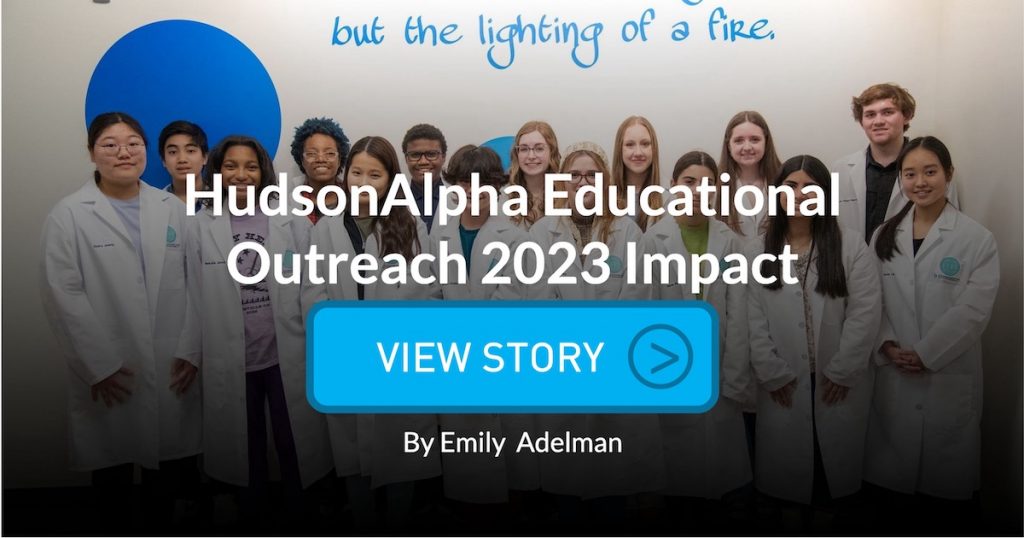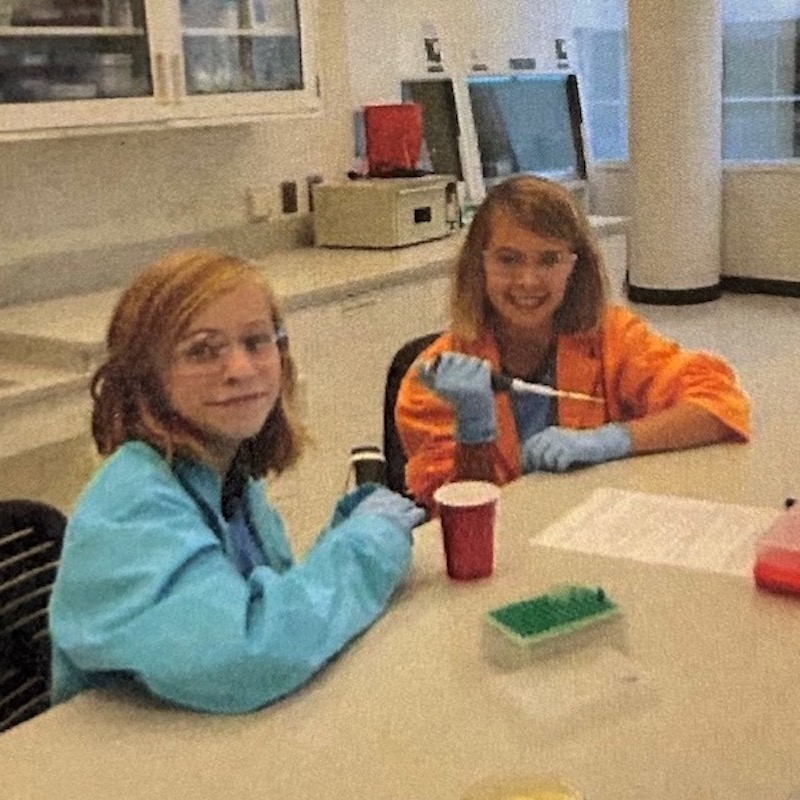Teachers from across the state came to the HudsonAlpha Institute for Biotechnology in Huntsville, Ala., April 14-15, 2015, for the Genetic Resources to Empower Alabama Teachers (GREAT) workshop.
Learning begins in the classroom, and ensuring that teachers have accurate information about genomics, genetics and biotechnology creates a genomically-literate society and prepares the future biotech workforce.
The Educational Outreach team at HudsonAlpha presents the GREAT workshop multiple times each year to keep high school life science teachers up-to-date in the fields of genetics, genomics and biotechnology. The 2015 two-day workshop focused on cell division and cancer. Attendees had the opportunity to listen to HudsonAlpha educators discuss topics such as meiosis and mitosis, cancer detection and cell cycle regulation and also learned effective ways to translate these messages to students.
Educating and Empowering
GREAT was created to keep high school life science teachers current on the latest in genetic and genomic research and provide them with information that may not be included in the textbooks or that is possibly inaccurate.
“HudsonAlpha serves as a resource for teachers,” said Vice President for Educational Outreach Neil Lamb, Ph.D. “I hope that teachers leave the workshop feeling empowered, equipped and appreciated for the job that they do for students everyday.”
Nearly 110 educators from more than 60 high schools across Alabama took part in the seventh GREAT workshop and attended a series of sessions led by Educational Outreach team members Jennifer Carden, Dasi Price and Madelene Loftin, who prior to joining HudsonAlpha, were classroom teachers.
“We think in the world of a classroom and about what the teacher needs,” said Dasi Price. “GREAT allows teachers to invest in themselves and also invest in their students.”
The Teacher Becomes the Student
Sessions were directly related to the current course of study so that teachers not only learn background information but learn also how to effectively translate that message to their class. In doing so, teachers performed labs and activities that would be used in the classroom, such as the ChromoSock™ Meiosis Classroom Kit. This activity was created to represent chromosomes and to demonstrate the phases of meiosis and Mendel’s laws. To get a feel for how Chromosocks could be used in the classroom, educators experienced the lesson as students. This provided teachers with opportunities to think through the parts of the process that are challenging to students.
“Students may have underlying conceptions about chromosome movement that make deeper understanding difficult,” said Madelene Loftin. “If we provide students opportunities to confront and correct their own misconceptions about biological processes like cell division, we set the stage for deeper understanding of genetics.”
Cancer Update
GREAT 2015 also focused on cancer. Price lead a discussion on Hereditary Nonpolyposis Colorectal Cancer (HNPCC) detection, which explained that all cancer is genetic but only a small fraction is inherited. Jennifer Carden led educators in the C4 activity: Collecting Cancer-Causing Changes, showing how cancer can arise from a number of mutations.
In addition to group sessions, teachers had the opportunity to hear recent changes and advances in the world of cancer from genetic counselor Kelly East. East walked everyone through the latest technology and techniques being used in genetic testing during “Karyotyping and Beyond.” Karyotyping is a form of genetic testing used to diagnose genetic disorders, and while still in use, karyotyping has been supplemented by other approaches that can identify very small genetic mutations.
“In genetics, we are often uncover information that helps us understand a disease rather than find a cure,” said East. “This knowledge has great potential to improve the future of medicine, particularly in treating conditions like childhood developmental delay, a large proportion of which is thought to be genetic in origin.”
Educational outreach coordinator Adam Hott presented recent stories in cancer research from the past year including CUX1 mutations, the Pan-Cancer Project, identifying significant mutated genes in 12 cancer types, and how the microbiome may influence chemotherapy outcomes. Cancer has always been identified and studied based on the organs that it affects such as lung cancer. Today, we can identify specifics about the genetic causes of the cancer, identifying the mutations that lead to abnormal cell growth.
“Once you understand something at that level, you can start breaking it apart and looking for all kinds of connections,” said Hott.
Keeping Educators Informed
HudsonAlpha president and science director Richard Myers, Ph.D., said the GREAT workshop is a great mechanism for keeping educators informed of the research being conducted at HudsonAlpha. “Research in our field has been dramatically transformed; we used to look at one gene at a time and try to figure out the cause of an individual’s disease,” said Myers. “The Human Genome Project, together with next-generation sequencing technology, allows us to study now all of our genes in a single experiment.”
Lamb wrapped up the workshop with an introduction to the 2014-2015 educational guidebook, “Biotechnology Discoveries and Applications.” The guidebook is another way the HudsonAlpha educational outreach team informs life science educators about new discoveries, treatments or applications in genetics, genomics and biotechnology.


